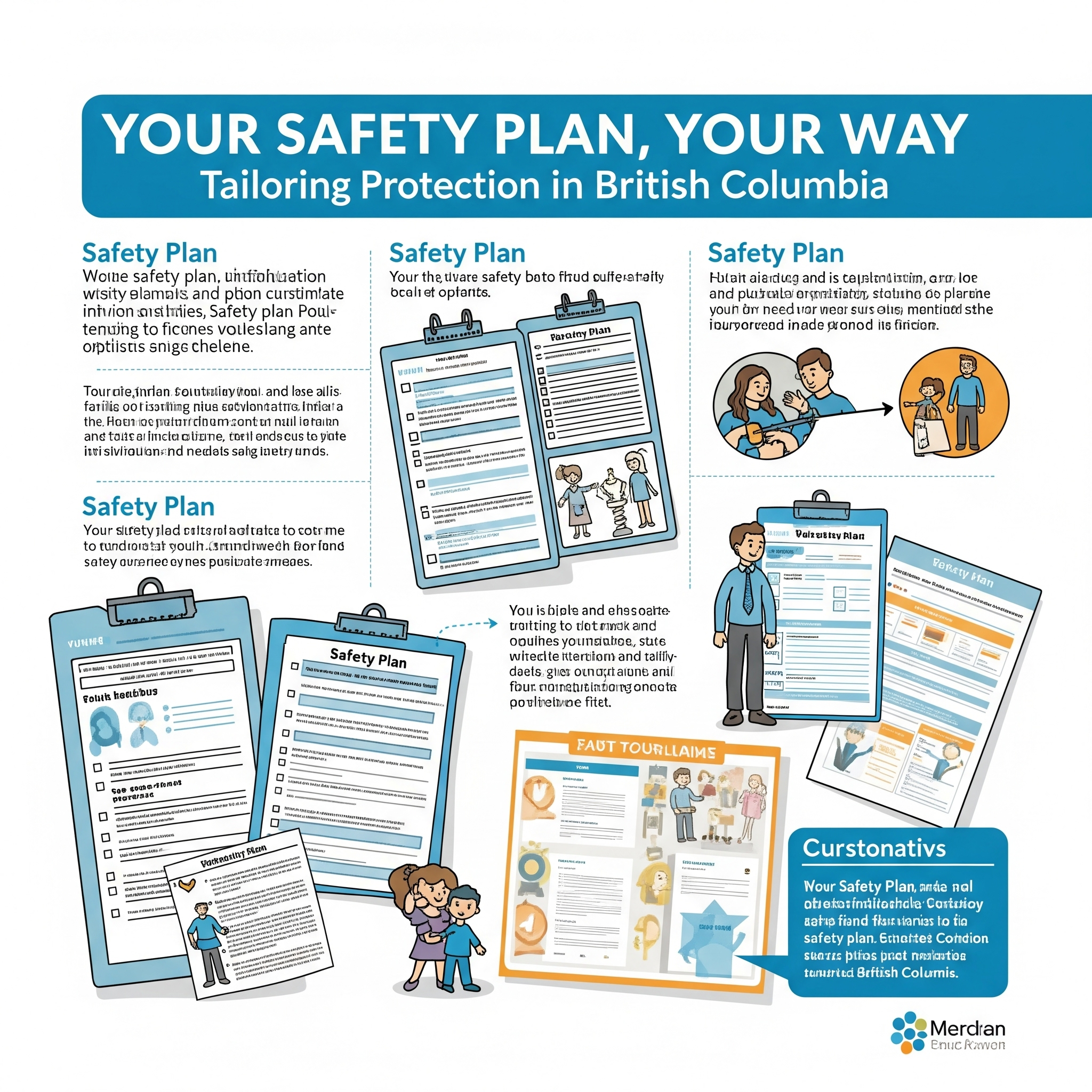Your Safety Plan, Your Way: Tailoring Protection in British Columbia
This blog post discusses the importance of creating personalized safety plans in British Columbia, highlighting the unique regional considerations and available support resources for enhancing personal security.

Your Safety Plan, Your Way: Tailoring Protection in British Columbia
Personal safety strategies must reflect individual circumstances and environments. In British Columbia, crafting a safety plan that aligns with your unique needs—whether you live in a remote community, an urban centre, or within a diverse cultural context—is essential for maintaining security and peace of mind.
What Is a Safety Plan?
A safety plan is a personalized guide to help you respond effectively to potential threats or crises. It empowers you to:
- Identify safe locations and escape routes
- Build a trusted support network
- Secure essential documents and resources
- Utilize communication tools and technology
Whether facing domestic violence, harassment, or planning for natural emergencies, a tailored safety plan provides clarity and confidence.
Why Customization Matters in BC
Remote and Rural Areas
- Limited access to services may require planning around transportation and communication gaps
- Include contact details for local volunteers, RCMP detachments, and community health centres
Urban Environments
- High population density and anonymity can pose safety challenges
- Map out well-lit escape routes, ride-share options, and nearby police stations
Cultural Considerations
- Respectful integration of cultural practices and language preferences enhances plan effectiveness
- Engage with organizations offering culturally sensitive support and translation services
Environmental Factors
- BC’s weather extremes and wildlife encounters may require additional precautions
- Include emergency supplies, weather alerts, and wildlife safety guidelines
Key Components of Your Personalized Safety Plan
1. Safe Places and Escape Routes
- List trusted homes, shelters, and community spaces
- Plan multiple exit paths from your residence, workplace, and transit stops
2. Support Network Contact List
- Identify friends, family, neighbours, and agencies you trust
- Keep phone numbers and addresses accessible (both digital and printed)
3. Communication Strategies
- Establish code words or phrases with trusted contacts
- Ensure your phone is charged; carry a backup battery or safety app
4. Emergency Bag Essentials
- Important IDs, medical records, financial documents, medications, cash
- Keep the bag hidden but within reach, or store a duplicate set offsite
5. Technology and Digital Safety
- Use secure messaging apps and location-sharing features with trusted contacts
- Regularly update passwords and consider a secondary device for sensitive communications
BC Resources for Support and Guidance
- VictimLink BC (1-800-563-0808): 24/7 confidential helpline for victims of crime and trauma
- BC Society of Transition Houses: Referral to safe houses and community-based support
- Legal Aid BC: Advice on protection orders, tenant rights, and legal representation
- Indigenous Support Services: Culturally relevant safety planning in partnership with local bands and organizations
Taking the First Step
- Reach out to VictimLink BC to discuss your situation in confidence
- Work with a victim service advocate to customize and practice your plan
- Share your plan with trusted individuals and update it regularly as circumstances change
Conclusion
Your safety plan should be as unique as your life in British Columbia. By tailoring each element—safe places, support contacts, communication methods, and emergency preparations—you create a proactive guide that empowers you to navigate any crisis with greater confidence. Start building your plan today to ensure that, wherever you are in BC, help is within reach and you remain in control of your own security.
